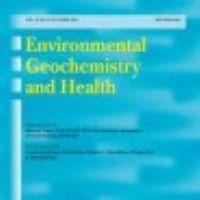Abstracto
-
Autores
Tisla Monteza-Destro, Eva María García-Noguero, José María Esbrí, Raimundo Jiménez-Ballesta, Francisco Jesús García-Navarro & Pablo Higueras
AbstractMining affects the environment, particularly through the persistence of accumulation of tailings materials; this is aggravated under tropical climatic conditions, which favours the release of potentially toxic elements (PTEs) bioavailable to the local flora and fauna and supposing a risk to human health. The Remance gold mine (Panamá), exploited intermittently for more than 100 years, and has remained derelict for over 20 years. Within the area live farmers who carry out subsistence agriculture and livestock activities. The objective of this study has been to study the transference of PTEs in the local agricultural soil-plants system, with the goal of identifying their bioavailability to perform a human risk assessment. The results obtained of the Bioaccumulation coefficient in local plants show very weak to strong absorption of As (< 0.001–1.50), Hg (< 0.001–2.38), Sb (0.01–7.83), Cu (0.02–2.89), and Zn (0.06–5.32). In the case of Cu in grass (18.3 mg kg−1) and plants (16.9 mg kg−1) the concentrations exceed the maximum authorised value in animal nutrition for ruminants (10 mg kg−1). The risk to human health for edible plants exceeds the non-carcinogenic risk for rice, corn, cassava, and tea leaves for Sb (HQ 19.450, 18.304, 6.075, 1.830, respectively), the carcinogenic risk for Cu (CR = 2.3 × 10–3, 7.7 × 10 −4, 1.1 × 10–3, 1.0 × 10–3, respectively), and the carcinogenic risk for As in rice, corn and tea leaves (CR = 8 × 10–5, 3 × 10–5, 3 × 10–5, respectively). Urgent measures are needed to alleviate these effects.
